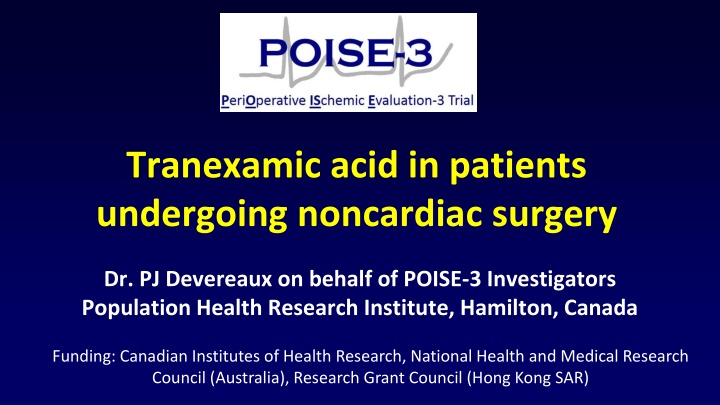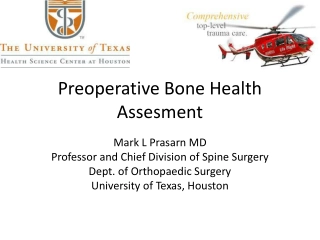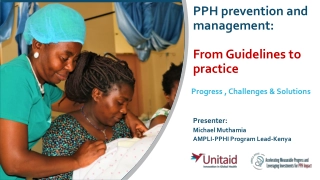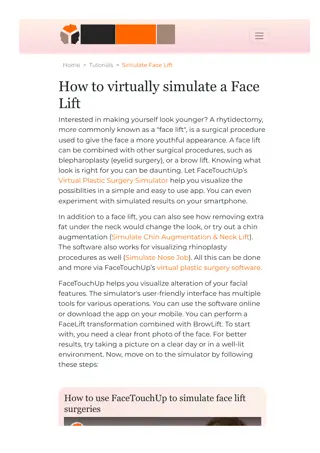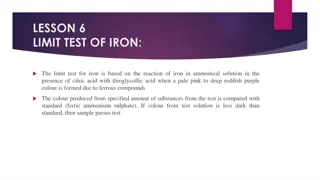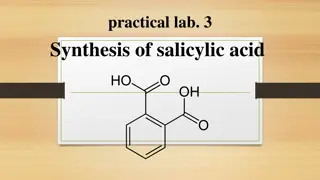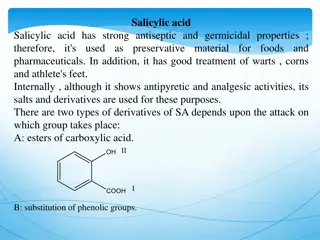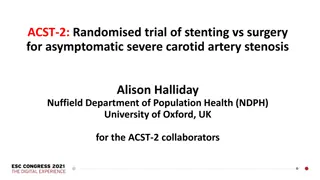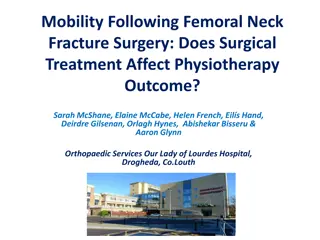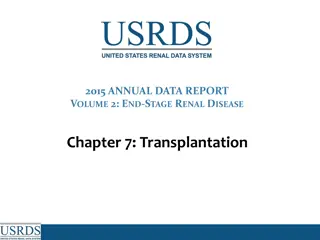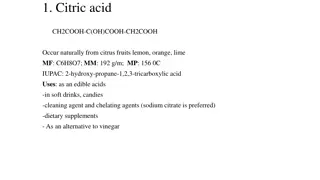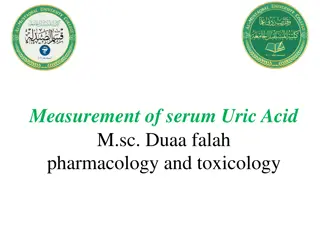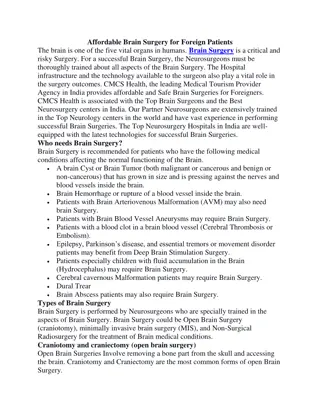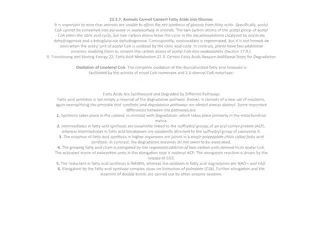Tranexamic Acid in Noncardiac Surgery Patients
Perioperative bleeding is a common complication in noncardiac surgery patients. Tranexamic acid (TXA) is being investigated as a potential antifibrinolytic drug to safely decrease such bleeding. The POISE-3 study, led by Dr. PJ Devereaux, aims to determine if TXA reduces life-threatening, major, and critical organ bleeding in noncardiac surgery patients at risk of bleeding and vascular events. This randomized controlled trial has specific eligibility criteria and intervention involving TXA administration or a placebo to assess primary efficacy and safety outcomes at 30 days post-surgery.
Download Presentation

Please find below an Image/Link to download the presentation.
The content on the website is provided AS IS for your information and personal use only. It may not be sold, licensed, or shared on other websites without obtaining consent from the author.If you encounter any issues during the download, it is possible that the publisher has removed the file from their server.
You are allowed to download the files provided on this website for personal or commercial use, subject to the condition that they are used lawfully. All files are the property of their respective owners.
The content on the website is provided AS IS for your information and personal use only. It may not be sold, licensed, or shared on other websites without obtaining consent from the author.
E N D
Presentation Transcript
Tranexamic acid in patients undergoing noncardiac surgery Dr. PJ Devereaux on behalf of POISE-3 Investigators Population Health Research Institute, Hamilton, Canada Funding: Canadian Institutes of Health Research, National Health and Medical Research Council (Australia), Research Grant Council (Hong Kong SAR)
Background Perioperative bleeding common complication in patients undergoing noncardiac surgery Tranexamic acid (TXA) antifibrinolytic drug that may safely decrease such bleeding
POISE-3 question In patients undergoing noncardiac surgery who are at risk of bleeding and vascular events does TXA reduce occurrence of life-threatening, major, and critical organ bleeding is TXA non-inferior for occurrence of major vascular complications within 30 days compared with placebo?
Design Randomized controlled trial Partial 2X2 factorial design patients on antihypertensive medication randomize to hypotension vs hypertension-avoidance strategy BP trial results will be presented separately Investigator initiated blinded trial
Eligibility criteria Included patients 45 yrs undergoing inpatient noncardiac surgery at risk of bleeding and vascular complications Excluded patients having intracranial neurosurgery planned administration of systemic non-study TXA during surgery eGFR <30 ml/min or receiving chronic dialysis
Intervention and F/U Patients randomized to receive TXA 1 gm IV bolus or placebo at start and end of surgery Follow-up troponin on first 3 days after surgery study personnel followed patients throughout hospitalization and contacted patients at 30 days 99.9% of participants completed 30-day follow-up
Outcomes Primary efficacy outcome at 30 days after randomization composite of life-threatening, major, and critical organ bleeding referred to as composite bleeding outcome Primary safety outcome at 30 days after randomization composite of myocardial injury after noncardiac surgery (MINS), nonhemorrhagic stroke, peripheral arterial thrombosis, and symptomatic proximal venous thromboembolism (VTE) referred to as composite vascular outcome
Hypotheses Primary efficacy hypothesis TXA superior to placebo for composite bleeding outcome Primary safety hypothesis TXA noninferior to placebo for composite vascular outcome for noninferiority hypothesis upper bound of one-sided 97.5% confidence interval (CI) for hazard ratio (HR) of composite vascular outcome needed to fall below 1.125
Design modification Initial design was to randomize 10,000 patient Due to financial deficit resulting from slowed recruitment during COVID-19 pandemic, Steering Committee stopped recruitment on July 15, 2021, after at least 9500 patients were randomized decision made without knowledge of trial results but with knowledge that aggregate composite bleeding and vascular outcomes were higher than originally estimated
9535 patients randomized 114 centres in 22 countries 3,793 2,961 2,578 178 25
Baseline characteristics Characteristics TXA Placebo (N=4778) (N=4757) 70 70 Age (mean yrs) 56% 56% Male History of coronary artery disease peripheral artery disease stroke 30% 15% 8% 31% 15% 8% Undergoing major surgery 79% 80%
Compliance In both TXA and placebo groups 96.3% of patients received both doses of study drug
Primary efficacy outcome Outcome TXA n=4757 no. (%) Placebo n=4778 no. (%) HR P (95% CI) value Composite bleeding outcome 433 (9.1) 561 (11.7) 0.76 <0.0001 (0.67-0.87) No significant effect of blood pressure study interventions on TXA primary efficacy result (interaction P=0.67)
Primary safety outcome Outcome TXA n=4757 no. (%) Placebo n=4778 no. (%) HR Non- inferiority P value (95% CI) Composite vascular outcome 649 (14.2) 639 (13.9) 1.023 0.04 (0.918-1.142) No significant effect of blood pressure study interventions on TXA primary safety result (interaction P=0.74)
Probability that primary safety outcome HR is < or 1.125 Based on composite vascular outcome result HR, 1.023; 95% CI, 0.918-1.142 there is 95.6% probability that primary safety outcome HR is <1.125 and 4.4% probability that HR is 1.125
Secondary bleeding outcomes P value Outcome TXA n=4757 no. (%) Placebo n=4778 no. (%) HR (95% CI) BIMS* Life-threatening bleeding Major bleeding Critical organ bleeding 416 (8.7) 78 (1.6) 363 (7.6) 12 (0.3) 541 (11.3) 79 (1.7) 496 (10.4) 21 (0.4) 0.76 (0.67-0.87) 0.99 (0.73-1.36) 0.72 (0.63-0.83) 0.57 (0.28-1.16) <0.0001 0.96 <0.0001 0.12 BIMS - bleeding independently associated with mortality after noncardiac surgery
Secondary vascular and net risk-benefit outcomes Outcome TXA n=4757 no. (%) Placebo n=4778 no. (%) HR P (95% CI) value MINS MINS not fulfilling definition of MI Myocardial infarction Net risk-benefit outcome* 608 (12.8) 549 (11.5) 67 (1.4) 983 (20.7) 602 (12.6) 549 (11.5) 53 (1.1) 1046 (21.9) 1.02 (0.91-1.14) 1.01 (0.89-1.13) 1.27 (0.89-1.82) 0.94 (0.86-1.02) 0.76 0.91 0.19 0.14 *composite of vascular death and nonfatal life-threatening , major, or critical organ bleeding, MINS, stroke, peripheral arterial thrombosis, and symptomatic proximal VTE
Tertiary bleeding outcomes Outcome TXA n=4757 no. (%) Placebo n=4778 no. (%) HR P (95% CI) value ISTH major bleeding* Transfused 1 unit of PRBCs 315 (6.6) 449 (9.4) 415 (8.7) 574 (12.0) 0.75 (0.65-0.87) 0.77 (0.68-0.88) 0.0001 <0.0001 * International society of thrombosis and haemostasis
Tertiary mortality and vascular outcomes Outcome TXA n=4757 no. (%) Placebo n=4778 no. (%) HR P (95% CI) value All-cause mortality Vascular mortality Hemorrhagic stroke Amputation Symptomatic PE Symptomatic proximal DVT Any proximal VTE Cardiac revascularization 52 (1.1) 25 (0.5) 2 (<0.1) 14 (0.3) 24 (0.5) 11 (0.2) 32 (0.7) 12 (0.3) 57 (1.2) 30 (0.6) 0 (0) 21 (0.4) 17 (0.4) 13 (0.3) 28 (0.6) 13 (0.3) 0.92 (0.63-1.33) 0.84 (0.49-1.42) - 0.67 (0.34-1.31) 1.42 (0.76-2.64) 0.85 (0.38-1.90) 1.15 (0.69-1.91) 0.93 (0.42-2.03) 0.65 0.51 - 0.24 0.27 0.69 0.59 0.85
Other tertiary outcomes Outcome TXA n=4757 no. (%) Placebo n=4778 no. (%) HR P (95% CI) value Acute kidney injury New renal replacement therapy Re-hospitalization for vasc reasons Seizures Infection Sepsis Length of hospital stay median (IQR) Days alive at home median (IQR) Disability 672 (14.1) 19 (0.4) 84 (1.8) 10 (0.2) 499 (10.5) 68 (1.4) 4.0 (2.1-7.1) 25 (22-28) 1408 (31.9) 655 (13.7) 16 (0.3) 75 (1.6) 3 (<0.1) 487 (10.2) 63 (1.3) 4.0 (2.1-7.1) 25 (21-28) 1407 (31.6) 1.03 (0.93-1.15) 1.19 (0.61-2.23) 1.13 (0.82-1.54) 3.35 (0.92-12.20) 1.03 (0.91-1.17) 1.08 (0.77-1.53) 0 (-0.1 to 0.1) 0 (-0.4 to <0.1) 1.02 (0.92-1.13) 0.54 0.61 0.46 0.07 0.64 0.65 0.81 1.00 0.74
Additional transfusion data Outcome TXA n=4757 no. (%) Placebo n=4778 no. (%) OR P (95% CI) value Transfusion 2 units of PRBC 296 (6.2) 396 (8.3) 0.74 (0.64-0.86) <0.0001 Transfusion 2-4 units of PRBC 223 (4.7) 312 (6.5) 0.71 (0.60-0.84) <0.0001
Conclusions Among patients undergoing noncardiac surgery TXA reduced risk of composite of life-threatening, major, and critical organ bleeding although TXA had no significant effect on major vascular complications, non-inferiority was not established our results also demonstrated 95.6% probability that primary safety outcome HR is <1.125
Implication Healthcare providers and patients will have to weigh clear beneficial reduction in composite bleeding outcome absolute difference, 2.7%; 95% CI, 1.5 to 3.9 low probability of small increase in risk of composite vascular outcome absolute difference, 0.3%; 95% CI, -1.1 to 1.7
Implication Majority of patients having noncardiac surgery do not receive TXA Annual global shortage of 30 million blood product units surgical bleeding accounts for upwards of 40% of all transfusions Given that 300 million surgeries occur annually worldwide POISE-3 identifies that use of TXA could avoid upwards of 8 million bleeding events resulting in transfusion on annual basis Indicating potential for large public health and clinical benefit if TXA becomes standard practice in noncardiac surgery
